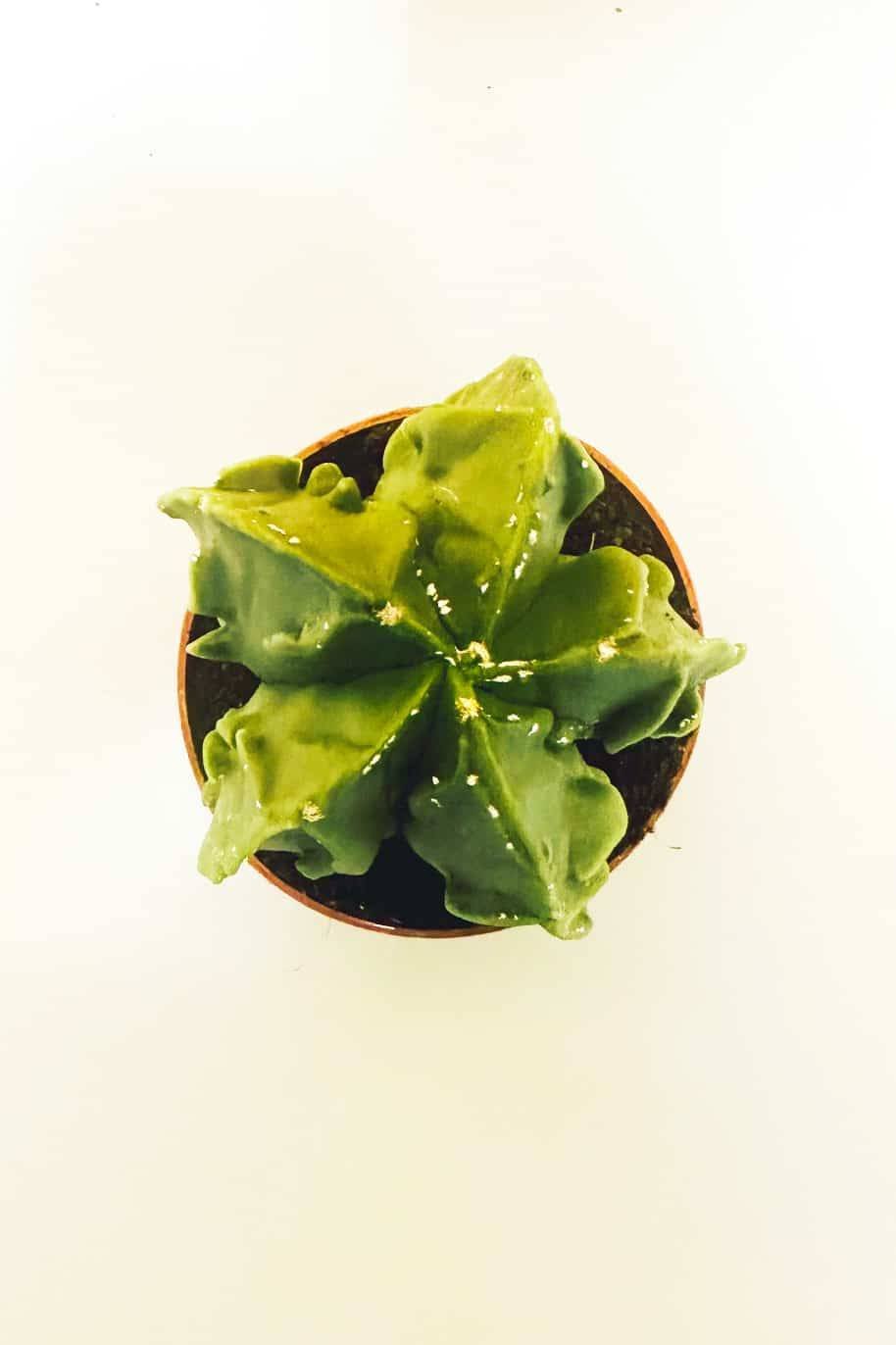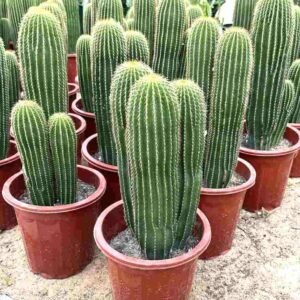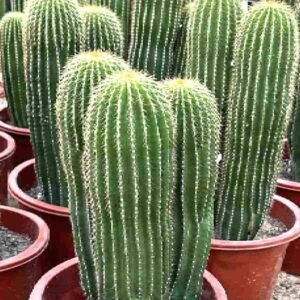Plant Bio
The Bishop’s Cap cactus is a slow-growing cacti native to northern and central Mexico as well as the southern United States. Astrophytum myriostigma , also known as the Bishop’s Hat, is an easy-to-grow houseplant making it great for beginners. The cactus has no spines, just like the Lamb’s Tail Cactus, making it a friendlier cacti for homes with small children and pets.
Bishop’s Cap Light Requirements
Avoid placing young Bishop’s Hats in very bright sunlight as it will lead to scorching of the plant’s surface. Give the young cactus plenty of filtered light or light shade. Mature plants tolerate bright light but from a distance. The Bishop’s Cap cactus is not tolerant of full sun.
Water Needs
Water your Bishop’s Cap once every two weeks in the spring and summer for optimal growth. Allow the soil to dry between waterings to avoid root rot. Decrease waterings beginning in the fall when temperatures cool. Withhold water in the winter months when the plant will naturally go dormant. Slowly introduce water again in the spring and then commence with giving water once every two weeks as the plant begins its growth phase
Temperature And Humidity
Keep temperatures for the Bishop’s Cap cactus around 70 degrees Fahrenheit ( 21 degrees Celsius) during the spring and summer. Begin to introduce cooler temperatures in the fall, then keep the Bishop’s Hat at around 50 degrees Fahrenheit ( 10 degrees Celsius) during winter dormancy. Humidity of around 50 percent is sufficient for this cactus.
Plant Bio
The Bishop’s Cap cactus is a slow-growing cacti native to northern and central Mexico as well as the southern United States. Astrophytum myriostigma , also known as the Bishop’s Hat, is an easy-to-grow houseplant making it great for beginners. The cactus has no spines, just like the Lamb’s Tail Cactus, making it a friendlier cacti for homes with small children and pets.
Bishop’s Cap Light Requirements
Avoid placing young Bishop’s Hats in very bright sunlight as it will lead to scorching of the plant’s surface. Give the young cactus plenty of filtered light or light shade. Mature plants tolerate bright light but from a distance. The Bishop’s Cap cactus is not tolerant of full sun.
Water Needs
Water your Bishop’s Cap once every two weeks in the spring and summer for optimal growth. Allow the soil to dry between waterings to avoid root rot. Decrease waterings beginning in the fall when temperatures cool. Withhold water in the winter months when the plant will naturally go dormant. Slowly introduce water again in the spring and then commence with giving water once every two weeks as the plant begins its growth phase
Temperature And Humidity
Keep temperatures for the Bishop’s Cap cactus around 70 degrees Fahrenheit ( 21 degrees Celsius) during the spring and summer. Begin to introduce cooler temperatures in the fall, then keep the Bishop’s Hat at around 50 degrees Fahrenheit ( 10 degrees Celsius) during winter dormancy. Humidity of around 50 percent is sufficient for this cactus.
Soil And Fertilizer
The Bishop’s Cap requires a well-draining soil mix. Use a cactus or succulent soil or create your own mixture of 25% coarse sand, 25% pumice, and 50% potting soil. Place a thin layer of sand over the surface of the soil to help protect the neck of the cactus. Grow your cactus in an unglazed, clay pot to allow excess moisture to wick away from the soil and decrease the chance of bacteria or fungi formation. Use a low-nitrogen fertilizer, in the spring and summer only, to encourage growth and blooming. Feed once per month at most.
The Bishop’s Cap requires a well-draining soil mix. Use a cactus or succulent soil or create your own mixture of 25% coarse sand, 25% pumice, and 50% potting soil. Place a thin layer of sand over the surface of the soil to help protect the neck of the cactus. Grow your cactus in an unglazed, clay pot to allow excess moisture to wick away from the soil and decrease the chance of bacteria or fungi formation. Use a low-nitrogen fertilizer, in the spring and summer only, to encourage growth and blooming. Feed once per month at most.














Reviews
There are no reviews yet.